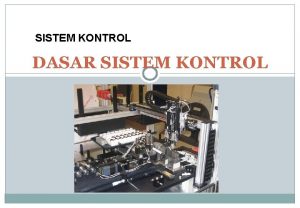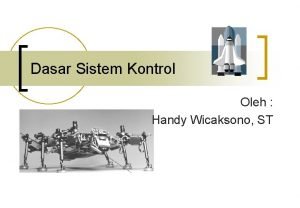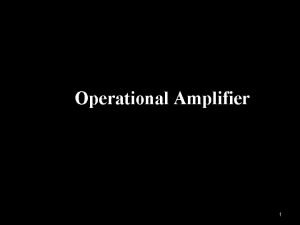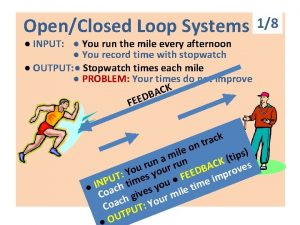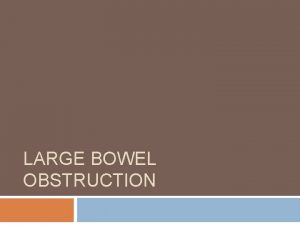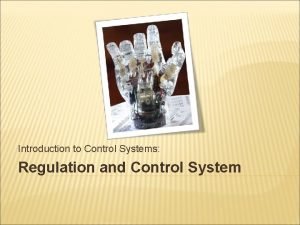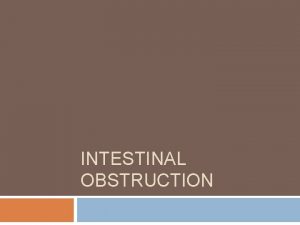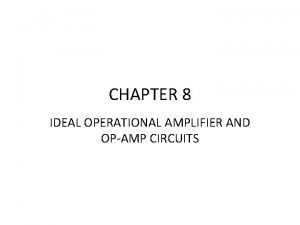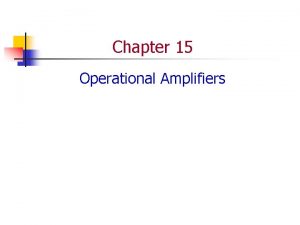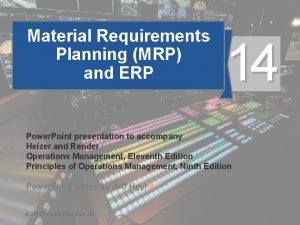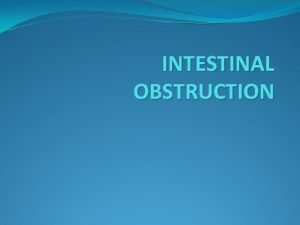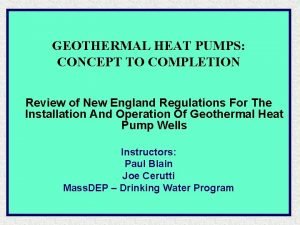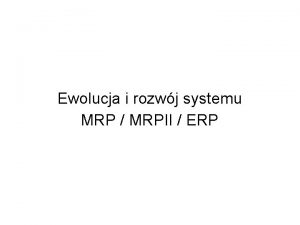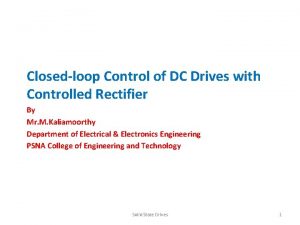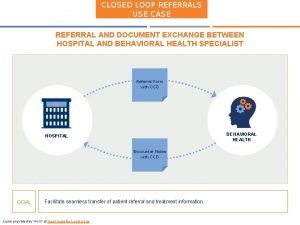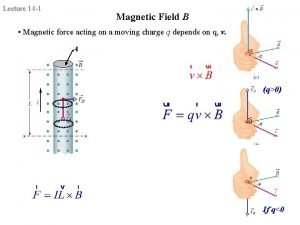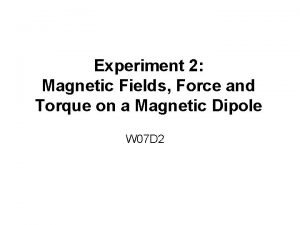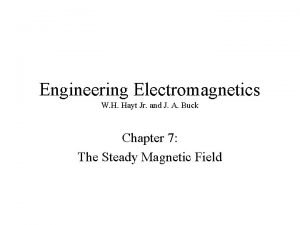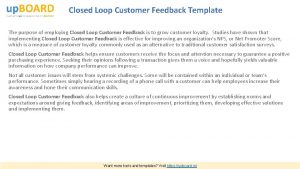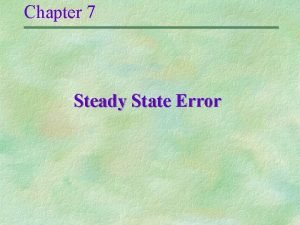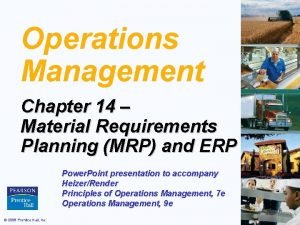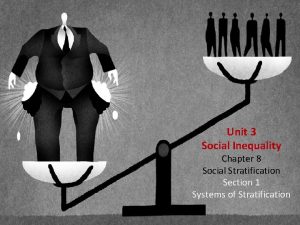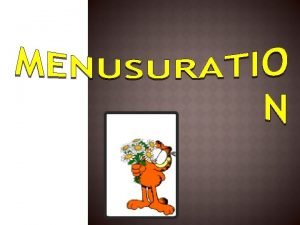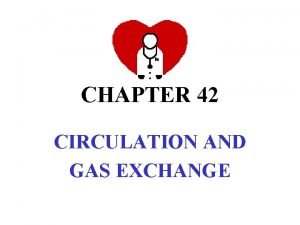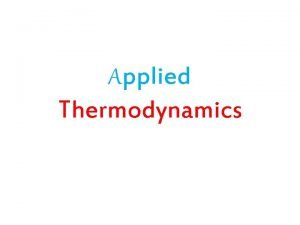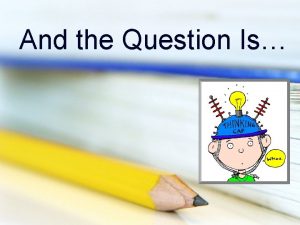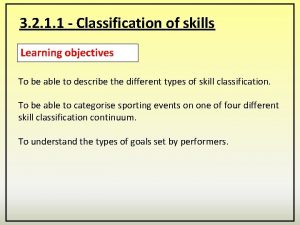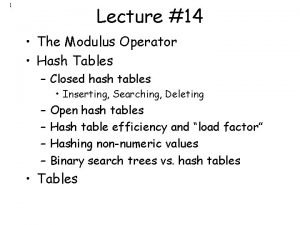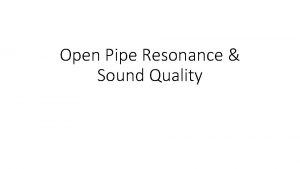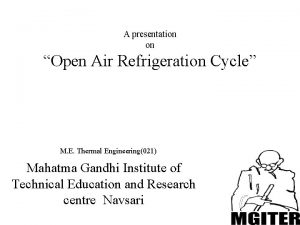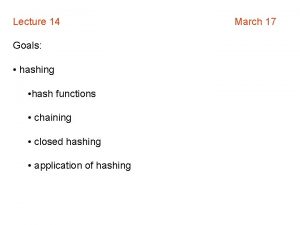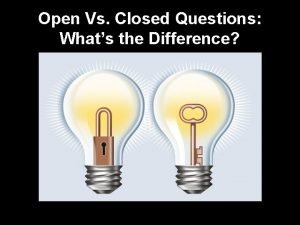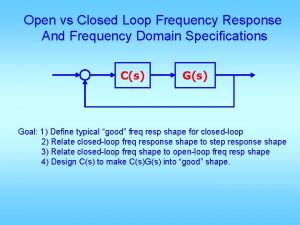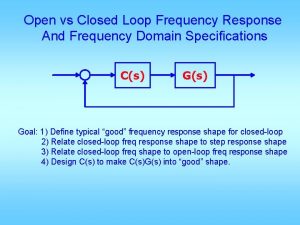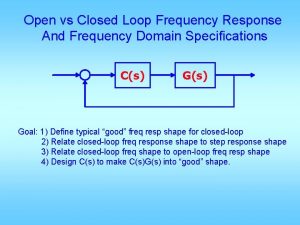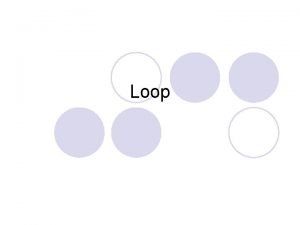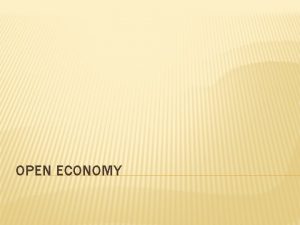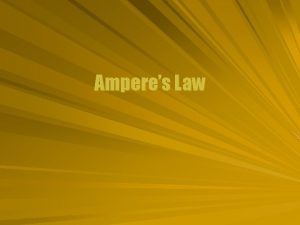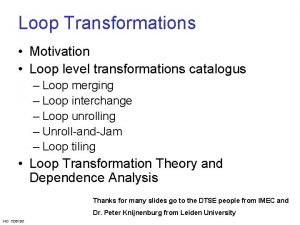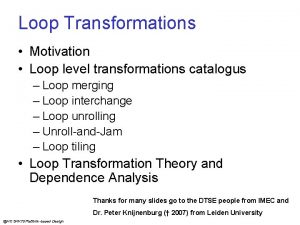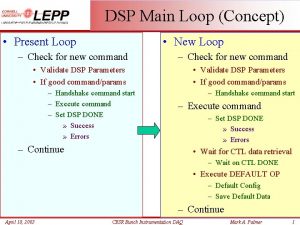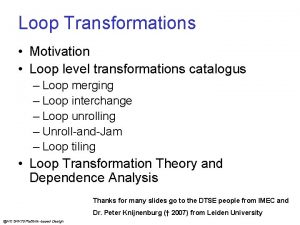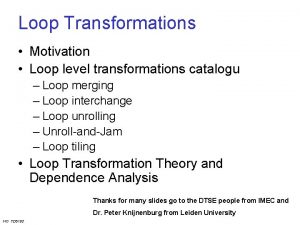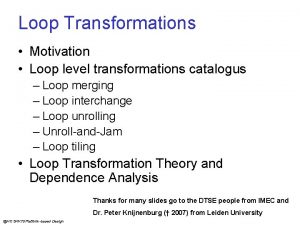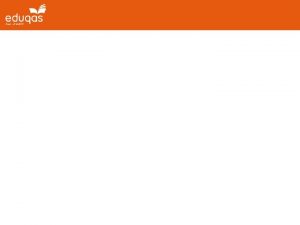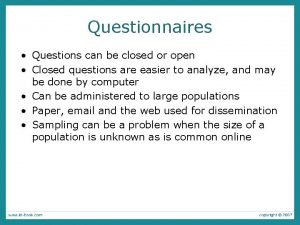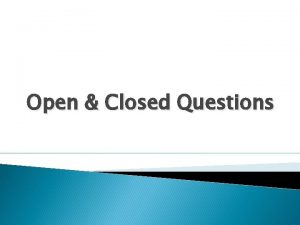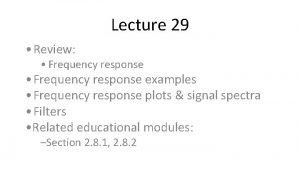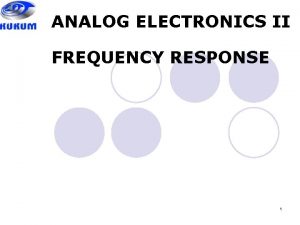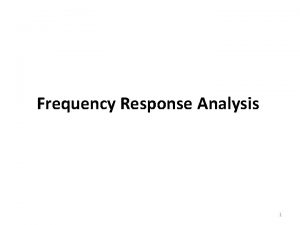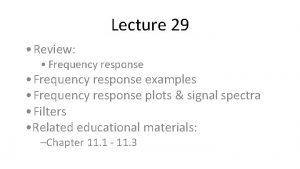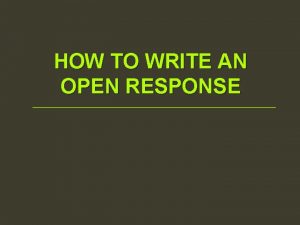Open vs Closed Loop Frequency Response And Frequency



























![clear all; n=[0 0 40]; d=[1 2 0]; figure(1); clf; margin(n, d); %proportional control clear all; n=[0 0 40]; d=[1 2 0]; figure(1); clf; margin(n, d); %proportional control](https://slidetodoc.com/presentation_image_h2/aa76c690e6edadf930086ad607ce16c3/image-28.jpg)








![Lead design example • Plant transfer function is given by: • n=[50000]; d=[1 60 Lead design example • Plant transfer function is given by: • n=[50000]; d=[1 60](https://slidetodoc.com/presentation_image_h2/aa76c690e6edadf930086ad607ce16c3/image-37.jpg)
![n=[50000]; d=[1 60 500 0]; G=tf(n, d); figure(1); margin(G); Mp_d = 16/100; zeta_d =0. n=[50000]; d=[1 60 500 0]; G=tf(n, d); figure(1); margin(G); Mp_d = 16/100; zeta_d =0.](https://slidetodoc.com/presentation_image_h2/aa76c690e6edadf930086ad607ce16c3/image-38.jpg)



![n=[50]; d=[1/5 1 0]; figure(1); clf; margin(n, d); grid; hold on; Mp = 20/100; n=[50]; d=[1/5 1 0]; figure(1); clf; margin(n, d); grid; hold on; Mp = 20/100;](https://slidetodoc.com/presentation_image_h2/aa76c690e6edadf930086ad607ce16c3/image-42.jpg)






![n=[50]; d=[1/5 1 0]; figure(1); clf; margin(n, d); grid; hold on; Mp = 20/100; n=[50]; d=[1/5 1 0]; figure(1); clf; margin(n, d); grid; hold on; Mp = 20/100;](https://slidetodoc.com/presentation_image_h2/aa76c690e6edadf930086ad607ce16c3/image-49.jpg)






- Slides: 55


Open vs Closed Loop Frequency Response And Frequency Domain Specifications C(s) Goal: 1) Define typical “good” frequency response shape for closed-loop 2) Relate closed-loop freq response shape to step response shape 3) Relate closed-loop freq shape to open-loop freq response shape 4) Design C(s) to make C(s)G(s) into “good” shape.

Mr and BW are widely used Closed-loop phase resp. rarely used

Prototype 2 nd order system closed-loop frequency response No resonance for z <= 0. 7 Mr=0. 3 d. B for z=0. 6 z=0. 1 Mr=1. 2 d. B for z=0. 5 0. 2 For small zeta, resonance freq is about wn 0. 3 Mr=2. 6 d. B for z=0. 4 BW ranges from 0. 5 wn to 1. 5 wn For good z range, BW is 0. 8~1. 25 wn -3 d. B BW 0. 63 So take BW ≈ wn 1. 58 0. 79 1. 26 w/wn

Closed-loop BW to wn ratio BW≈wn z

Prototype 2 nd order system closed-loop frequency response z=0. 1 When z >=0. 6 no visible resonance peak 0. 2 0. 3 When z <=0. 5 visible resonance peak near w=wn Since we design for z >=0. 5, Mr and wr are of less value No resonance for z <= 0. 7 Mr<0. 5 d. B for z=0. 6 Mr=1. 2 d. B for z=0. 5 Mr=2. 6 d. B for z=0. 4 w=wn w/wn

Prototype 2 nd order system closed-loop frequency response Mr vs z

Mr in d. B

Percentage Overshoot in closed-loop step response z > 0. 5 is good z

Percentage Overshoot in closed-loop step response Mr < 15% is good, >40% not tolerable Mr

Percentage Overshoot in closed-loop step response Mr < 1 d. B is good, >3 d. B not tolerable Mr in d. B

z=0. 1 0. 2 0. 3 0. 4 Open loop frequency response wgc In the range of good zeta, wgc is about 0. 7 times wn w/wn

Open-loop wgc to wn ratio wgc≈0. 7 wn z

z=0. 1 In the range of good zeta, PM is about 100*z 0. 2 0. 3 0. 4 w/wn

Phase Margin PM = 100 z z

Percentage overshoot: Mp PM+Mp =70 line Percentage Overshoot in closed-loop step response Phase Margin in degrees: PM in deg

Important relationships • Closed-loop BW are very close to wn • Open-loop gain cross over wgc ≈ (0. 65~0. 8)* wn, • When z <= 0. 6, wr and wn are close • When z >= 0. 7, no resonance • z determines phase margin and Mp: z PM Mp 0. 4 0. 5 0. 6 0. 7 44 53 61 25 16 10 PM+Mp ≈70 67 5 deg % ≈100 z

Desired Bode plot shape High low-freq-gain for steady state tracking Low high-freq-gain for noise attenuation Sufficient PM near wgc for stability wgc w 0 d. B 0 -90 -180 w

Controller design with Bode C(s) Gp(s) From specs: => desired Bode shape of Gol(s) Make Bode plot of Gp(s) Add C(s) to change Bode shape Get closed loop system Run step response, or sinusoidal response








Proportional controller design • Obtain open loop Bode plot • Convert design specs into Bode plot req. • Select KP based on requirements: – For improving ess: KP = Kp, v, a, des / Kp, v, a, act – For fixing Mp: select wgcd to be the freq at which PM is sufficient, and KP = 1/|G(jwgcd)| – For fixing speed: from td, tr, tp, or ts requirement, find out wn, let wgcd = wn and choose KP as above
![clear all n0 0 40 d1 2 0 figure1 clf marginn d proportional control clear all; n=[0 0 40]; d=[1 2 0]; figure(1); clf; margin(n, d); %proportional control](https://slidetodoc.com/presentation_image_h2/aa76c690e6edadf930086ad607ce16c3/image-28.jpg)
clear all; n=[0 0 40]; d=[1 2 0]; figure(1); clf; margin(n, d); %proportional control design: figure(1); hold on; grid; V=axis; Mp = 10; %overshoot in percentage PMd = 70 -Mp + 3; semilogx(V(1: 2), [PMd-180], ': r'); %get desired w_gc x=ginput(1); w_gcd = x(1); KP = 1/abs(evalfr(tf(n, d), j*w_gcd)); figure(2); margin(KP*n, d); figure(3); mystep(KP*n, d+KP*n);





Lead Controller Design

plead zlead 20 log(Kzlead/plead) Goal: select z and p so that max phase lead is at desired wgc and max phase lead = PM defficiency!


Lead Design • • • From specs => PMd and wgcd From plant, draw Bode plot Find PMhave = 180 + angle(G(jwgcd) DPM = PMd - PMhave + a few degrees Choose a=plead/zlead so that fmax = DPM and it happens at wgcd
![Lead design example Plant transfer function is given by n50000 d1 60 Lead design example • Plant transfer function is given by: • n=[50000]; d=[1 60](https://slidetodoc.com/presentation_image_h2/aa76c690e6edadf930086ad607ce16c3/image-37.jpg)
Lead design example • Plant transfer function is given by: • n=[50000]; d=[1 60 500 0]; • Desired design specifications are: – Step response overshoot <= 16% – Closed-loop system BW>=20;
![n50000 d1 60 500 0 Gtfn d figure1 marginG Mpd 16100 zetad 0 n=[50000]; d=[1 60 500 0]; G=tf(n, d); figure(1); margin(G); Mp_d = 16/100; zeta_d =0.](https://slidetodoc.com/presentation_image_h2/aa76c690e6edadf930086ad607ce16c3/image-38.jpg)
n=[50000]; d=[1 60 500 0]; G=tf(n, d); figure(1); margin(G); Mp_d = 16/100; zeta_d =0. 5; % or calculate from Mp_d PMd = 100*zeta_d + 3; BW_d=20; w_gcd = BW_d*0. 7; Gwgc=evalfr(G, j*w_gcd); PM = pi+angle(Gwgc); phimax= PMd*pi/180 -PM; alpha=(1+sin(phimax))/(1 -sin(phimax)); zlead= w_gcd/sqrt(alpha); plead=w_gcd*sqrt(alpha); K=sqrt(alpha)/abs(Gwgc); ngc = conv(n, K*[1 zlead]); dgc = conv(d, [1 plead]); figure(1); hold on; margin(ngc, dgc); hold off; [ncl, dcl]=feedback(ngc, dgc, 1, 1); figure(2); step(ncl, dcl);

Before design After design

Closed-loop Bode plot by: margin(ncl*1. 414, dcl); Magnitude plot shifted up 3 So, gc is BW

![n50 d15 1 0 figure1 clf marginn d grid hold on Mp 20100 n=[50]; d=[1/5 1 0]; figure(1); clf; margin(n, d); grid; hold on; Mp = 20/100;](https://slidetodoc.com/presentation_image_h2/aa76c690e6edadf930086ad607ce16c3/image-42.jpg)
n=[50]; d=[1/5 1 0]; figure(1); clf; margin(n, d); grid; hold on; Mp = 20/100; zeta = sqrt((log(Mp))^2/(pi^2+(log(Mp))^2)); PMd = zeta * 100 + 10; ess 2 ramp= 1/200; Kvd=1/ess 2 ramp; Kva = n(end)/d(end-1); Kzp = Kvd/Kva; figure(2); margin(Kzp*n, d); grid; [GM, PM, wpc, wgc]=margin(Kzp*n, d); w_gcd=wgc; phimax = (PMd-PM)*pi/180; alpha=(1+sin(phimax))/(1 -sin(phimax)); z=w_gcd/sqrt(alpha); p=w_gcd*sqrt(alpha); ngc = conv(n, alpha*Kzp*[1 z]); dgc = conv(d, [1 p]); figure(3); margin(tf(ngc, dgc)); grid; [ncl, dcl]=feedback(ngc, dgc, 1, 1); figure(4); step(ncl, dcl); grid; figure(5); margin(ncl*1. 414, dcl); grid;






![n50 d15 1 0 figure1 clf marginn d grid hold on Mp 20100 n=[50]; d=[1/5 1 0]; figure(1); clf; margin(n, d); grid; hold on; Mp = 20/100;](https://slidetodoc.com/presentation_image_h2/aa76c690e6edadf930086ad607ce16c3/image-49.jpg)
n=[50]; d=[1/5 1 0]; figure(1); clf; margin(n, d); grid; hold on; Mp = 20/100; zeta = sqrt((log(Mp))^2/(pi^2+(log(Mp))^2)); PMd = zeta * 100 + 10; ess 2 ramp= 1/200; Kvd=1/ess 2 ramp; Kva = n(end)/d(end-1); Kzp = Kvd/Kva; figure(2); margin(Kzp*n, d); grid; [GM, PM, wpc, wgc]=margin(Kzp*n, d); w_gcd=wgc; phimax = (PMd-PM)*pi/180; alpha=(1+sin(phimax))/(1 -sin(phimax)); z=w_gcd/alpha^. 25; %sqrt(alpha); p=w_gcd*alpha^. 75; %sqrt(alpha); ngc = conv(n, alpha*Kzp*[1 z]); dgc = conv(d, [1 p]); figure(3); margin(tf(ngc, dgc)); grid; [ncl, dcl]=feedback(ngc, dgc, 1, 1); figure(4); step(ncl, dcl); grid; figure(5); margin(ncl*1. 414, dcl); grid;






 Open loop vs closed loop in cars
Open loop vs closed loop in cars Blok diagram pemanggang roti
Blok diagram pemanggang roti Manakah yang lebih baik open loop atau close loop system
Manakah yang lebih baik open loop atau close loop system Normally open timed open symbol
Normally open timed open symbol Open innovation open science open to the world
Open innovation open science open to the world Closed loop levelling
Closed loop levelling Closed loop scrubber system
Closed loop scrubber system Gain op amp formula
Gain op amp formula Closed loop system
Closed loop system Intestinal obstruction classification
Intestinal obstruction classification Watt's flyball governor block diagram
Watt's flyball governor block diagram Dynamic intestinal obstruction
Dynamic intestinal obstruction Closed loop kommunikation
Closed loop kommunikation Op amp exam questions solutions
Op amp exam questions solutions Op amp voltage follower
Op amp voltage follower Missile launcher closed-loop system
Missile launcher closed-loop system Mrp system examples
Mrp system examples Closed loop obstruction examples
Closed loop obstruction examples Open loop geothermal well massachusetts
Open loop geothermal well massachusetts Mrp iii
Mrp iii Closed loop control of dc drives
Closed loop control of dc drives Closed loop referral system
Closed loop referral system Closed loop medication administration safety initiative
Closed loop medication administration safety initiative Magnetic field in a closed loop
Magnetic field in a closed loop Torque in magnetic field
Torque in magnetic field Ampere circuital law
Ampere circuital law Closed-loop feedback
Closed-loop feedback Closed loop medication administration
Closed loop medication administration Closed loop customer feedback
Closed loop customer feedback Steady state error solved problems
Steady state error solved problems Closed loop assurance
Closed loop assurance Mrp operations management
Mrp operations management Himss emram
Himss emram Dale sanders health catalyst
Dale sanders health catalyst Open and closed stratification systems
Open and closed stratification systems Open and closed systems
Open and closed systems Advantages and disadvantages of probing questions
Advantages and disadvantages of probing questions Block letter two
Block letter two Closed system earth
Closed system earth Closed and open figures
Closed and open figures Difference between open and closed circulatory system
Difference between open and closed circulatory system Open vs closed switch
Open vs closed switch Difference between open cycle and closed cycle gas turbine
Difference between open cycle and closed cycle gas turbine Closed and open questions
Closed and open questions Open and closed skills examples
Open and closed skills examples Internally paced skill
Internally paced skill What does a modulo operator do
What does a modulo operator do Apush thesis formula
Apush thesis formula Resonance in open pipe
Resonance in open pipe Open and closed air refrigeration cycle
Open and closed air refrigeration cycle Magneto hydro dynamics power generation ppt
Magneto hydro dynamics power generation ppt Hash goals
Hash goals 1-5 solving inequalities answers
1-5 solving inequalities answers Open or closed circle
Open or closed circle Closed kinematic chain
Closed kinematic chain Difference between open and closed questions
Difference between open and closed questions

